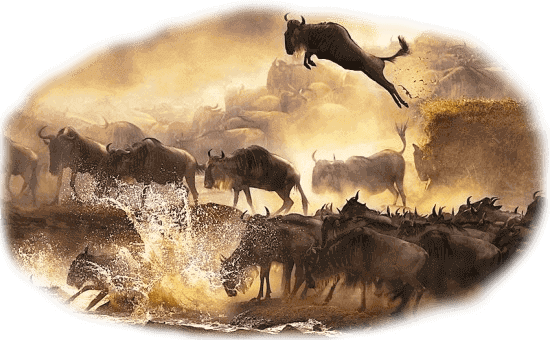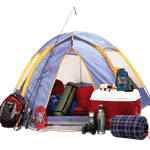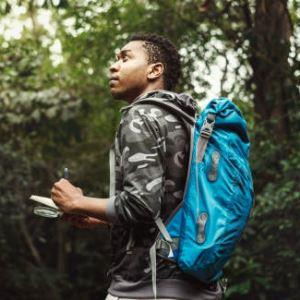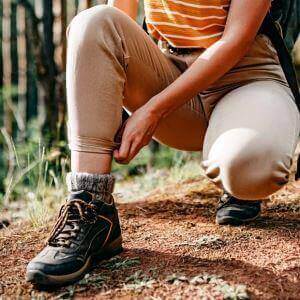 Kenya remains one of Africa's most iconic destinations for safari lovers, and Swedish tourists continue to show a strong interest in its vibrant wildlife and scenic landscapes. When it comes to planning the perfect safari adventure, choosing the right time of year is essential. Kenya experiences two primary seasons: dry and wet. The dry season, running from June to October, is widely considered the best time for wildlife spotting. During these months, animals gather around water sources, and the sparse vegetation makes them easier to see. This period also coincides with Sweden's summer holidays, making it an ideal window for travel. The Great Migration, a highlight for many wildlife enthusiasts, occurs in Kenya's Maasai Mara between July and October. Over two million wildebeests, zebras, and gazelles migrate across the plains, drawing predators such as lions and crocodiles to the action-packed river crossings. This natural spectacle is a bucket-list experience for many Swedes seeking an unforgettable safari. While the long dry season is peak time for game viewing, the short dry season from January to February is another excellent option. Wildlife is still abundant, and tourist numbers tend to be lower. Swedish travelers looking for a quieter and more intimate experience often choose these months. This period also offers superb light for photography and increased chances of spotting baby animals. The wet seasons from March to May and again in November transform the Kenyan landscape into a lush, green paradise. Although the rains can make travel to some areas more challenging, this is also the time when the parks are least crowded. Bird watchers, in particular, benefit from the presence of migratory birds and a rejuvenated ecosystem. Accommodation deals are more common during the rainy months, offering good value for budget-conscious tourists. Most choose the dry seasons, especially June through October, for the best overall safari experience. However, those who prefer fewer crowds and lower prices often opt for January to February or the shoulder months. Swedish tourists have several excellent options depending on their travel goals. Whether your interest lies in witnessing the Great Migration, photographing elusive big cats, or soaking in the breathtaking beauty of the African savanna, Kenya offers unforgettable adventures throughout the year. The diverse ecosystems and wildlife patterns provide multiple opportunities for memorable encounters, regardless of the season. Families from Sweden may especially appreciate the structured nature of dry season safaris, where animals are easier to find and guides can plan routes with confidence. For those wondering about the best time for Swedish families to visit Kenya for animal sightings, the months of July through October remain unmatched. These months feature both an abundance of wildlife and family-friendly conditions such as mild temperatures and clear roads. Couples and solo travelers might prefer the quieter short dry season of January to February, where the experience feels more intimate and less commercial. Regardless of when you visit, Kenya’s rich biodiversity, expert-guided tours, and welcoming culture ensure that every trip is extraordinary. With proper planning, Swedish tourists can tailor their itinerary to match their interests and expectations, making the most of this African jewel year-round.
Kenya remains one of Africa's most iconic destinations for safari lovers, and Swedish tourists continue to show a strong interest in its vibrant wildlife and scenic landscapes. When it comes to planning the perfect safari adventure, choosing the right time of year is essential. Kenya experiences two primary seasons: dry and wet. The dry season, running from June to October, is widely considered the best time for wildlife spotting. During these months, animals gather around water sources, and the sparse vegetation makes them easier to see. This period also coincides with Sweden's summer holidays, making it an ideal window for travel. The Great Migration, a highlight for many wildlife enthusiasts, occurs in Kenya's Maasai Mara between July and October. Over two million wildebeests, zebras, and gazelles migrate across the plains, drawing predators such as lions and crocodiles to the action-packed river crossings. This natural spectacle is a bucket-list experience for many Swedes seeking an unforgettable safari. While the long dry season is peak time for game viewing, the short dry season from January to February is another excellent option. Wildlife is still abundant, and tourist numbers tend to be lower. Swedish travelers looking for a quieter and more intimate experience often choose these months. This period also offers superb light for photography and increased chances of spotting baby animals. The wet seasons from March to May and again in November transform the Kenyan landscape into a lush, green paradise. Although the rains can make travel to some areas more challenging, this is also the time when the parks are least crowded. Bird watchers, in particular, benefit from the presence of migratory birds and a rejuvenated ecosystem. Accommodation deals are more common during the rainy months, offering good value for budget-conscious tourists. Most choose the dry seasons, especially June through October, for the best overall safari experience. However, those who prefer fewer crowds and lower prices often opt for January to February or the shoulder months. Swedish tourists have several excellent options depending on their travel goals. Whether your interest lies in witnessing the Great Migration, photographing elusive big cats, or soaking in the breathtaking beauty of the African savanna, Kenya offers unforgettable adventures throughout the year. The diverse ecosystems and wildlife patterns provide multiple opportunities for memorable encounters, regardless of the season. Families from Sweden may especially appreciate the structured nature of dry season safaris, where animals are easier to find and guides can plan routes with confidence. For those wondering about the best time for Swedish families to visit Kenya for animal sightings, the months of July through October remain unmatched. These months feature both an abundance of wildlife and family-friendly conditions such as mild temperatures and clear roads. Couples and solo travelers might prefer the quieter short dry season of January to February, where the experience feels more intimate and less commercial. Regardless of when you visit, Kenya’s rich biodiversity, expert-guided tours, and welcoming culture ensure that every trip is extraordinary. With proper planning, Swedish tourists can tailor their itinerary to match their interests and expectations, making the most of this African jewel year-round.
Summary of Kenya Safari Seasons for Swedish Tourists
| Season | Months | Highlights | Travel Tip |
|---|---|---|---|
| Long Dry Season | June - October | Best for wildlife viewing, Great Migration | Ideal for first-time safari travelers |
| Short Dry Season | January - February | Good wildlife viewing, fewer tourists | Great for photographers and bird watchers |
| Long Rainy Season | March - May | Lush landscapes, fewer crowds | Bring waterproof gear; avoid some areas |
| Short Rainy Season | November | Green scenery, baby animals | Good deals on lodges, light rains expected |
Best Months for Swedish Travelers to Explore Kenya's National Parks
Kenya is a top-tier destination for safari tourism, especially for travelers from Sweden seeking a warm, wildlife-filled escape. Swedish tourists often aim to make the most of their vacation time, and choosing the right months for a visit is essential for the ultimate safari experience. Kenya's wildlife seasons are generally split into dry and wet periods, each offering its own unique advantages. The dry season, stretching from June to October, is widely regarded as the best time for game viewing. During these months, Swedish travelers can enjoy clear skies, minimal rainfall, and exceptional visibility. Animals tend to gather around water sources, making them easier to locate. Popular national parks such as Maasai Mara, Amboseli, and Tsavo are bustling with wildlife, and the reduced vegetation enhances the chances of spotting the Big Five. In addition to favorable weather, this period aligns with Sweden's summer holidays, allowing families and individuals to take extended vacations. The opportunity to witness the Great Wildebeest Migration in the Maasai Mara between July and October is another compelling reason to plan a trip during this time. For travelers looking to avoid peak crowds, the short dry season from January to February presents another excellent option. The wildlife remains highly active, and the climate is still pleasant, making for enjoyable safaris with fewer tourists. This season is particularly attractive for photographers and nature enthusiasts due to the optimal light and scenic landscapes. The rainy seasons March to May and again in November offer a different kind of safari experience. While the rains can make some roads impassable, the landscape becomes lush and green, and many animals give birth during this time. Bird watchers will find these months especially rewarding thanks to an influx of migratory species. For travelers asking about Kenya safari seasons ideal for Swedish tourists, the answer depends on preferences. Those wanting the highest probability of wildlife sightings and dry, comfortable conditions should aim for the long dry season. Meanwhile, those seeking quieter reserves, budget-friendly options, or a different perspective on Kenya's beauty might consider the off-peak wet seasons. Kenya offers something special no matter the time of year. Swedish tourists can tailor their journey according to their interests, whether it's family-friendly excursions, luxury experiences, or immersive nature photography. With thoughtful planning and seasonal awareness, every safari becomes a uniquely memorable adventure.
What Are the Ideal Safari Months for Wildlife in Kenya?
When planning a safari in Kenya, understanding the seasonal variations is key to optimizing your wildlife viewing experience. Kenya's climate and wildlife activity shift throughout the year, and aligning your visit with the right season can significantly enhance your trip. Swedish travelers, in particular, benefit from aligning their holiday periods with Kenya's most rewarding wildlife seasons. This alignment not only ensures better chances of seeing the animals but also makes travel more convenient and enjoyable due to weather and accessibility factors. Here are the safari months broken down with specific benefits:
- June to October (Long Dry Season): These months are ideal for game viewing. Wildlife congregates near water sources, and the sparse vegetation improves visibility. Swedish tourists can take advantage of their summer holidays to travel during this peak season. The pleasant weather and abundance of animals make it one of the most recommended periods for safari.
- January to February (Short Dry Season): This is another excellent time for safaris. The dry conditions persist, wildlife remains easy to spot, and the crowds are fewer. It's a perfect season for travelers who prefer a quieter, more relaxed safari experience.
- March to May (Long Rainy Season): This period sees heavy rainfall, which rejuvenates the landscape. Though wildlife is more dispersed, birdwatching is at its best. Tourists looking for deals and fewer crowds may still find this season rewarding, provided they're prepared for occasional travel disruptions.
- November (Short Rainy Season): With intermittent rains and lush scenery, this month offers opportunities to see newborn animals and enjoy lower travel costs. It appeals to nature lovers and repeat visitors.
Understanding Kenya travel weather by month for Swedish visitors allows for informed travel planning, ensuring the best possible wildlife encounters tailored to seasonal highlights.
Best Time to Witness the Great Migration in Kenya for Tourists
The Great Migration in Kenya is often hailed as one of the most extraordinary wildlife spectacles on Earth. It is a powerful display of nature, where over two million wildebeests, zebras, and gazelles move in search of greener pastures. This awe-inspiring journey spans the Serengeti in Tanzania and the Maasai Mara in Kenya, and it draws thousands of global travelers each year, including many from Sweden. For Swedish tourists eager to see this phenomenal event, timing is everything. The migration generally reaches the Maasai Mara between July and October. During these months, the animals cross the Mara River, risking their lives against predators like crocodiles and big cats waiting on the riverbanks. These dramatic scenes are iconic moments that visitors hope to witness and capture on camera. The dry season coincides with the migration, making it an ideal time for game drives. The roads are accessible, vegetation is thinner, and wildlife congregates near water sources, enhancing visibility. Swedish families and individuals often take advantage of their summer holidays to travel during this period, enjoying both favorable weather and unforgettable wildlife experiences. The best time for Swedish travelers to spot wildebeest migration in Kenya is undoubtedly from July through October. These months offer the highest probability of seeing the herds in action and provide excellent conditions for exploring the Maasai Mara. Advance planning is crucial, as this season is incredibly popular. Lodges and camps within the reserve book up quickly, and prices tend to be higher due to demand. Booking several months in advance ensures better accommodation options and tailored safari experiences. Tour operators also recommend scheduling early morning and late afternoon game drives, as these times offer optimal lighting and increased wildlife activity. While the Great Migration is the star attraction, it's not the only highlight of this period. Visitors also have a high chance of seeing lions, cheetahs, leopards, elephants, and buffalo. Birdwatchers will be pleased with the presence of various migratory species, and photographers will find ample opportunities to capture Kenya's raw beauty in perfect light. Witnessing the Great Migration is a once-in-a-lifetime experience that resonates deeply with nature lovers. For Swedish tourists planning their Kenyan adventure, aligning the trip with the migration season offers not only dramatic wildlife encounters but also a profound connection with Africa's untamed wilderness. It's a period when the rhythm of nature takes center stage, offering a raw, unfiltered look into one of the most ancient animal movements on Earth. Visitors not only witness wildlife in motion but also gain insight into the complex balance of predator and prey, survival, and renewal. Many Swedish travelers find that experiencing the migration firsthand evokes a deep emotional connection and sense of wonder that’s hard to replicate. Whether you're watching the sun rise over the plains as wildebeests thunder across the horizon, or observing a lion pride in pursuit, these moments leave an indelible mark. It's not just a vacation; it's a journey into a world where nature reigns supreme. With careful planning and the right timing, a Kenyan safari centered around the migration can exceed expectations and create unforgettable memories, inspiring a lifelong appreciation for Africa’s unparalleled wildlife heritage.
When Can Swedish Visitors See the Wildebeest Migration in Kenya?
Swedish visitors hoping to witness the awe-inspiring wildebeest migration in Kenya should plan their trip between July and October. During these months, the massive herds of wildebeests, zebras, and gazelles make their way into the Maasai Mara from Tanzania, offering unparalleled wildlife viewing experiences. This period also features dramatic river crossings, where the animals must brave strong currents and lurking crocodiles an unforgettable sight for any safari-goer. The migration aligns perfectly with Sweden's summer holiday calendar, making it convenient for families and solo travelers alike. The dry season ensures open, passable roads and clearer views across the savanna, which enhances both the comfort and success of game drives. Wildlife is easier to locate as animals cluster around remaining water sources, and the reduced vegetation further improves visibility. For those looking to capture the perfect photo or simply soak in the grandeur of nature’s rhythms, this is the most reliable season. The combination of clear skies, golden light, and concentrated wildlife activity creates outstanding conditions for both amateur and professional photographers. It's a time when every game drive holds the potential for unforgettable moments, from a wildebeest herd galloping across the plains to a leopard resting in the shade of an acacia tree. Advance bookings are strongly recommended, as lodges and camps within the Maasai Mara tend to fill up quickly during these peak months. Securing your spot early not only guarantees better accommodation choices but also allows for more personalized safari planning. Many lodges offer expertly guided tours, cultural visits, and optional hot air balloon safaris to make the experience even more enriching. Visiting during this time guarantees an immersive safari adventure rich with iconic African wildlife and thrilling natural encounters. It's more than just sightseeing it's about stepping into a living documentary, where each moment tells a story of survival, beauty, and the interconnectedness of all life. Whether it’s your first safari or your fifth, the Great Migration season in Kenya will leave you forever changed.
Best Wildlife Viewing Seasons in Kenya for Swedish Nature Lovers
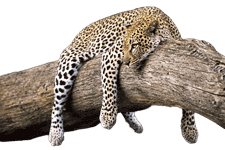 Kenya is a dream destination for Swedish nature lovers, offering diverse wildlife, scenic savannas, and unforgettable safari experiences. Knowing when to go is essential for getting the most out of your trip. Kenya has two primary seasons that shape the wildlife-viewing experience: the dry season and the wet season. The dry season, running from June through October, is widely considered the best period for safaris. During these months, the weather is cooler and drier, making it easier to explore national parks such as Maasai Mara, Amboseli, and Samburu. Animals tend to gather around limited water sources, allowing for more consistent and accessible sightings. For Swedish tourists, this timing also aligns with their summer holidays, making travel logistics simpler and more convenient. Photographers and wildlife enthusiasts will particularly enjoy the improved visibility and golden light that enhances game drives. The short dry season from January to February provides another excellent opportunity. The skies remain clear, and the landscapes are still teeming with life. Since fewer tourists visit during this window, it offers a more tranquil safari experience. This season is ideal for those looking to avoid crowds while still enjoying excellent game viewing and photo opportunities. The long rainy season, from March to May, transforms Kenya's landscapes into a lush, green paradise. Though travel can be more challenging due to muddy roads and heavier rainfall, this season brings a different charm. The parks are quieter, and accommodations are often more affordable. Birdwatchers will be delighted by the arrival of migratory species, and it’s also a great time to witness baby animals taking their first steps in the wild. The short rainy season in November offers similar advantages. Though rainfall is lighter, the vegetation is still vibrant. Wildlife can be more dispersed, but the natural beauty and quieter atmosphere create a serene setting for more reflective travelers. While preferences vary, the long dry season from June to October offers the most reliable and rewarding safari experience. During these months, the weather is stable, the roads are in good condition, and wildlife sightings are frequent. This period is particularly advantageous for those hoping to witness dramatic scenes like predator-prey interactions or the Great Migration in the Maasai Mara. For Swedish tourists, this season aligns perfectly with summer vacation, allowing families and solo travelers alike to make the most of their time abroad. For those who seek solitude or are on a budget, the short dry season and even the rainy months present viable and enriching alternatives. January to February offers fewer crowds and still excellent wildlife viewing conditions. The rainy seasons, from March to May and in November, bring out Kenya's lush landscapes and are a haven for birdwatchers and nature photographers. Although animal sightings may require more patience, the quieter atmosphere can enhance the sense of immersion in nature. Kenya’s year-round biodiversity ensures that no matter when you choose to visit, you’ll be met with incredible wildlife and welcoming landscapes. The best season for Swedish tourists to visit Kenya depends on individual travel goals, whether it’s adventure, relaxation, or wildlife exploration.
Kenya is a dream destination for Swedish nature lovers, offering diverse wildlife, scenic savannas, and unforgettable safari experiences. Knowing when to go is essential for getting the most out of your trip. Kenya has two primary seasons that shape the wildlife-viewing experience: the dry season and the wet season. The dry season, running from June through October, is widely considered the best period for safaris. During these months, the weather is cooler and drier, making it easier to explore national parks such as Maasai Mara, Amboseli, and Samburu. Animals tend to gather around limited water sources, allowing for more consistent and accessible sightings. For Swedish tourists, this timing also aligns with their summer holidays, making travel logistics simpler and more convenient. Photographers and wildlife enthusiasts will particularly enjoy the improved visibility and golden light that enhances game drives. The short dry season from January to February provides another excellent opportunity. The skies remain clear, and the landscapes are still teeming with life. Since fewer tourists visit during this window, it offers a more tranquil safari experience. This season is ideal for those looking to avoid crowds while still enjoying excellent game viewing and photo opportunities. The long rainy season, from March to May, transforms Kenya's landscapes into a lush, green paradise. Though travel can be more challenging due to muddy roads and heavier rainfall, this season brings a different charm. The parks are quieter, and accommodations are often more affordable. Birdwatchers will be delighted by the arrival of migratory species, and it’s also a great time to witness baby animals taking their first steps in the wild. The short rainy season in November offers similar advantages. Though rainfall is lighter, the vegetation is still vibrant. Wildlife can be more dispersed, but the natural beauty and quieter atmosphere create a serene setting for more reflective travelers. While preferences vary, the long dry season from June to October offers the most reliable and rewarding safari experience. During these months, the weather is stable, the roads are in good condition, and wildlife sightings are frequent. This period is particularly advantageous for those hoping to witness dramatic scenes like predator-prey interactions or the Great Migration in the Maasai Mara. For Swedish tourists, this season aligns perfectly with summer vacation, allowing families and solo travelers alike to make the most of their time abroad. For those who seek solitude or are on a budget, the short dry season and even the rainy months present viable and enriching alternatives. January to February offers fewer crowds and still excellent wildlife viewing conditions. The rainy seasons, from March to May and in November, bring out Kenya's lush landscapes and are a haven for birdwatchers and nature photographers. Although animal sightings may require more patience, the quieter atmosphere can enhance the sense of immersion in nature. Kenya’s year-round biodiversity ensures that no matter when you choose to visit, you’ll be met with incredible wildlife and welcoming landscapes. The best season for Swedish tourists to visit Kenya depends on individual travel goals, whether it’s adventure, relaxation, or wildlife exploration.
What Season Offers the Best Wildlife Safari Experience in Kenya?
Kenya offers an extraordinary year-round safari experience, but understanding the distinct seasons can help Swedish travelers maximize their wildlife encounters. Each season has its own character, affecting not just the types of animals visible but also the overall atmosphere and travel logistics. The long dry season, which lasts from June to October, is the most popular and reliable time for a safari. This is the peak period for spotting wildlife as animals cluster near water sources. With minimal rainfall, the roads are in excellent condition, and the clear skies make for stunning photography. The timing is especially convenient for Swedish tourists, aligning perfectly with their summer holiday break. During these months, the Maasai Mara becomes the stage for the Great Migration, one of the planet’s most spectacular wildlife events. From January to February, the short dry season offers another optimal window for safaris. Wildlife remains active, the terrain is easily navigable, and there are fewer crowds, providing a more intimate experience. Photographers favor this time for its softer light and unobstructed views. The long rainy season from March to May, though less ideal for consistent animal sightings, unveils a greener Kenya. Fewer tourists, lower prices, and a surge in birdlife make it a hidden gem for patient travelers and birdwatchers. The short rainy season in November provides a similar experience with intermittent showers and beautiful scenery. The best season and months for tourists to visit Kenya depends on personal preferences whether it's prime wildlife viewing, budget-friendly travel, or a quieter atmosphere. For many travelers, the dry season from June to October stands out due to its excellent game viewing conditions, minimal rainfall, and the opportunity to witness the Great Migration. This period also coincides with Sweden's summer holiday, making it an ideal time for families and solo adventurers to explore Kenya's rich ecosystems. The short dry season in January and February appeals to those looking for fewer crowds and more personalized safari experiences. It's also a great time for photography thanks to clear skies and favorable light conditions. On the other hand, the rainy seasons, while more unpredictable in terms of travel logistics, offer lush landscapes, vibrant birdlife, and discounted rates on accommodation. With careful planning and an understanding of what each season offers, Swedish tourists can enjoy a rewarding and memorable safari experience tailored to their specific interests and expectations.
FAQs About the Peak Season for Swedish Tourists in Kenya
Planning a safari to Kenya from Sweden is a dream come true for many nature lovers. But choosing the right season is essential to ensure optimal wildlife viewing, comfort, and overall value. With Kenya offering a variety of ecosystems and seasonal changes, many Swedish travelers turn to voice search queries for quick, reliable answers before booking. Here are six of the most common questions asked answered clearly to help plan the perfect safari.
- What Is the Best Month to Visit Kenya for Safari? The best months are July to October. These fall within Kenya’s long dry season, when wildlife is easy to spot around waterholes and the iconic Great Migration takes place. The weather is also cooler and more predictable, perfect for long game drives.
- Can I Travel to Kenya in January or February? Yes, these are the short dry months and offer great safari conditions. Wildlife remains active, and tourist numbers are lower, making the parks quieter. It's also a great time for capturing sharp wildlife photos under clear skies.
- What Are the Wettest Months in Kenya? March through May is the long rainy season. It rains frequently, making some roads muddy and certain areas harder to reach. However, the landscape becomes lush and vibrant, and it’s an excellent time for birdwatchers to see migratory species.
- Are November Safaris in Kenya Worth It? Absolutely. November falls in the short rainy season, but rainfall is usually light and intermittent. It’s a beautiful time to see green landscapes and baby animals, and prices are often lower than during peak periods.
- When Should I Book a Safari to See the Great Migration? To catch the wildebeest crossing the Mara River, plan your trip for any time between July and October. It’s best to book early, as this is a peak season and accommodations in Maasai Mara fill quickly.
- What Time of Year Do Swedes Visit Kenya for Wildlife Tours? Most Swedes travel between June and October, taking advantage of the dry season and school holidays. This time guarantees easier travel conditions and high chances of memorable wildlife encounters.
These answers are tailored to help Swedish tourists align their travel expectations with Kenya’s rich and varied seasons. Whether you seek adventure, photography, birdwatching, or the Great Migration, there’s a season that fits your perfect safari vision. With Kenya's dynamic climate and vast range of ecosystems, the country offers a variety of experiences that cater to different travel styles and interests. Swedish visitors can feel confident planning a trip that suits their vacation schedule, budget, and goals whether it's spotting big cats in the Maasai Mara, watching elephant herds in Amboseli, or discovering migratory birds in lush wetland reserves. No matter the time of year, thoughtful planning and local expertise will ensure that every safari becomes a story worth telling and a memory worth keeping. Kenya’s natural wonders await, and there's always a perfect moment to explore them.
